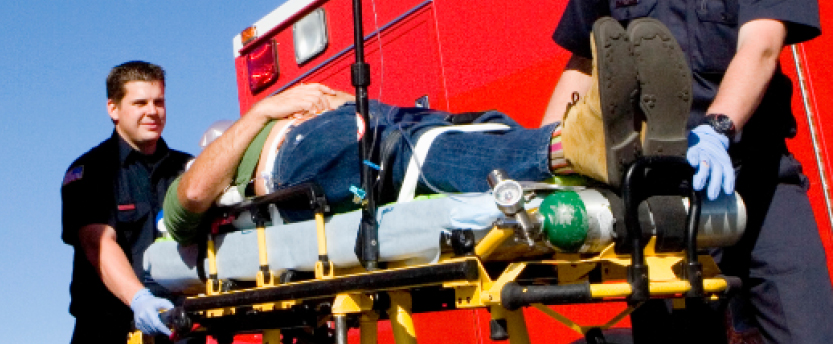Part 9 EMS System
How The EMS System Fits Together
The relationship between education, certification, licensure, and credentialing is evident. More importantly, the relationship of how Training Officers, Medical Directors, State EMS Officials, the National Registry, and EMS professionals interact within those components for continued EMS competency ensures that the best patient care is delivered within each community. The National EMS Scope of Practice Model (2019), p.15, describes a model which reflects an interdependency between education, certification, licensure, and credentialing.


Education
Education includes all areas of cognitive and psychomotor skill, and effective learning that an EMS professional undergoes for initial and ongoing competency. Education is an important, lifelong learning activity throughout the EMS Professional’s career and an important part of certification, licensure, and credentialing.Certification
Certification is an external verification of the competencies an individual achieves. The National Registry of Emergency Medical Technicians is the nation’s EMS certification organization, which verifies cognitive competency for national certification. The National Registry’s mission is centered on protecting the public and advancing the EMS profession.Licensure
Credentialing is a verification by the physician Medical Director that confirms the EMS professional is qualified and authorized to perform skills within their scope of practice and certification and licensed level. Credentialing occurs at the local level, which is the local agency’s responsibility for employment or roster status of EMS professionals.Roles And Responsibilities

EMS professionals are unique health care professionals who provide medical care in many environments, locations, and situations. Much of this care occurs in an out-of-hospital setting with minimal onsite supervision. Medical Directors provide medical oversight to ensure and maintain safe EMS practices. The National Registry recognizes the importance of interactions and intersections between the EMS professionals, Training Officers, and Medical Directors for safe and effective practice within the communities they serve.
EMS Professionals
After attending initial EMS education, achieving certification and state licensure, EMS professionals should focus on lifelong continuing education. EMS professionals are responsible for their continued competency and should maintain their national certification, state licensures, and local credentialing within their scope of practice for safe and effective patient care. As an EMS professional, it is the responsibility of the individual/registrant to make sure that they have completed all necessary steps for recertification.EMS Agencies, Training Officers, Medical Directors
EMS Agencies, Training Officers, and Physician Medical Directors are responsible for local credentialing and employment. Training Officers and Physician Medical Directors ensure the continued competence of nationally certified EMS providers for active status by validating continued EMS skills and education. Physician Medical Directors are responsible for clinical oversight, ensuring safe and competent EMS care within their community, and establishing protocols for credentialed EMS professionals through evidence-based guidelines and practice.Training Officers can set up an agency, maintain an agency roster and agency affiliation, approve education and skills verification appropriate to certification levels, apply education to individuals’ accounts, and approve or remove Training Officers and Medical Director affiliation.
Physician Medical Directors using the National Registry website under the Medical Director role are responsible for approving skills verification for advanced-level individuals (AEMT, Paramedics).
State EMS Officials
State EMS Officials have the legal authority of granting an EMS professional’s ability to practice within their scope. Each state has its own authority granted through the regulatory process. Some states use a separate application and recertification process to renew a state EMS license, which is separate from, or in addition to, National Registry requirements. Other states require National Registry recertification, which automatically renews an EMS professional’s state license.A Brief History Of National EMS Continued Competency
Since the registration of the first nationally certified EMS professional in 1971, EMS practice has evolved significantly. Over the last four decades, the EMS profession has advanced from fundamental methods of care and transportation to the delivery of more advanced emergency medicine in the out-of-hospital environment. The changes in the EMS Scope of Practice, the Practice Analysis, development and inclusion of evidence-based guidelines, and shifting community-based needs that helps drive the importance of continued competency and maintenance of certification.
The 2007 release and 2019 update of the National EMS Scope of Practice Model identified four levels of provider care:
- Emergency Medical Responder
- Emergency Medical Technician
- Advanced Emergency Medical Technician
- Paramedic
Principles And Application Of The Continued Competency Program

In 2010, a task force met to consider revisions of the National Registry recertification process. The task force was a multi-disciplinary group comprised of representatives of the major regulatory, medical oversight, and operational components of Emergency Medical Services. During the 2000s, continued competency was being addressed as a necessity for all medical specialties. The ongoing work of the American Board of Medical Specialties (ABMS) was reviewed by the task force. In summary, the National Registry continued competency task force selected five key principles identified by ABMS that were adopted and included in the recertification process for National EMS Certification.
The 5 principles include:
- Professional Standing
- Practice Performance
- Lifelong Learning
- Individual Continuing Education
- Self-Assessment*
Professional standing
For an individual to hold National EMS Certification, the individual must not be barred from licensure/ certification in any state. Holding a current valid license/certification is a critical element to assure the public that EMS providers have not faced any action that would bar them from practice.The National Registry requires disclosure of licensure/certification limitations as part of the certification and recertification requirements.
You may review further information related to this policy at www.nremt.org under Policies.
Practice performance
Each EMS system across the nation has evolved to meet the individual needs of the community or region it serves. National EMS Certification requires competency and education at the local level to best serve specific state and community needs. Continued competency to practice may be validated by psychomotor or skills assessments and other performance measurement tools. Validation of practice performance is the responsibility of the provider’s EMS supervisor or Training Officer at the EMR and EMT levels and by the provider’s Medical Director at the AEMT and Paramedic levels for active certification.Lifelong learning
Initial education/training is intended to provide entry-level knowledge and skills for an EMS provider. Building on the foundation of initial education, lifelong learning aids providers in adapting to the continuous changes in patient care, education, protocols, and other influencing factors of EMS practice.The improvement of patient care and providing quality care should be the goal of every EMS professional regardless of location. Lifelong learning is part of continued competency; therefore a requirement of the National Continued Competency Program, while being a key component to an EMS professional’s career.

